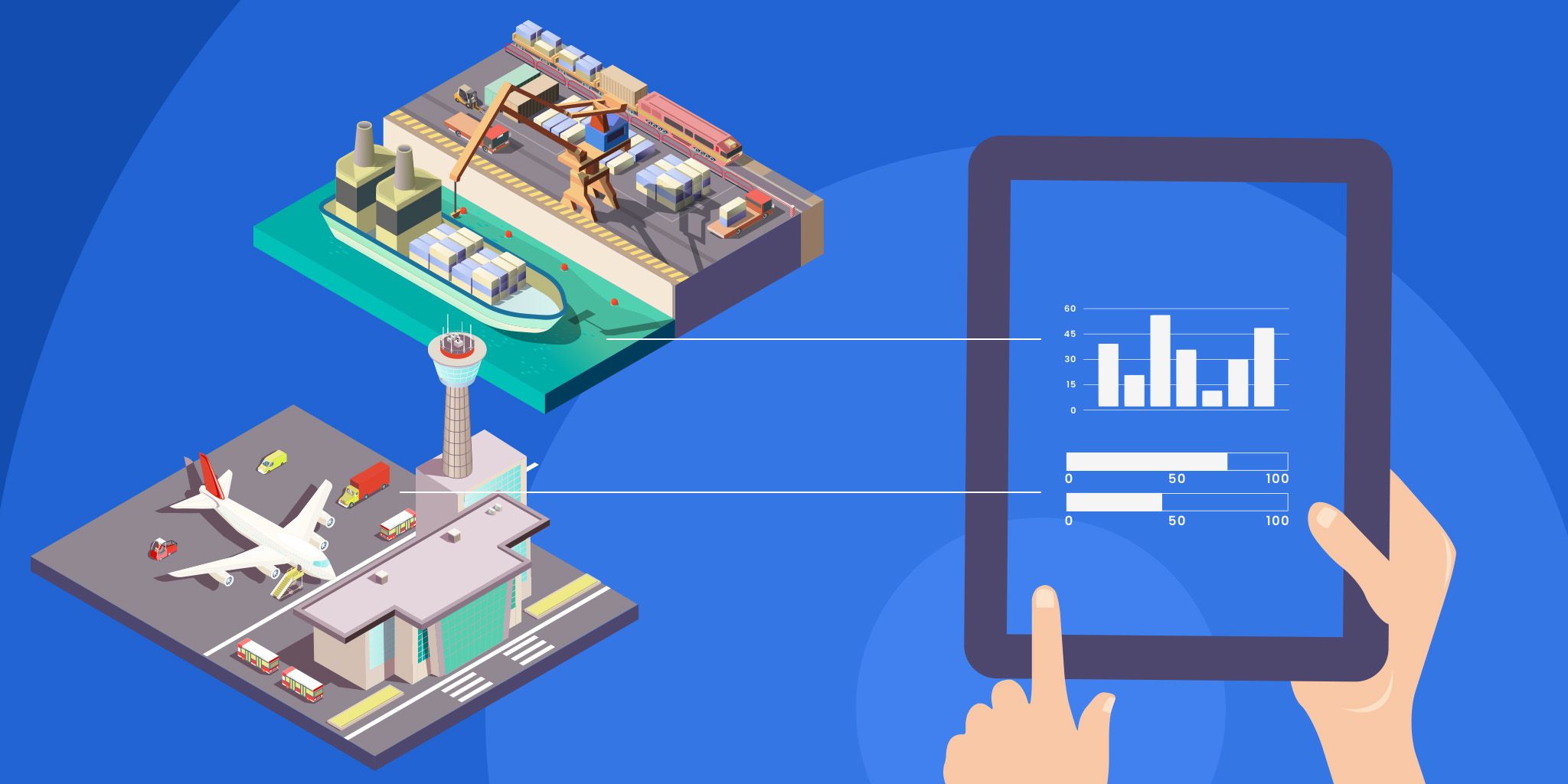Airport Digital Transformation Best Practices
Airport Digital Transformation Best Practices
- Last Updated: December 2, 2024
Guest Writer
- Last Updated: December 2, 2024



The aviation industry is among the businesses that were hit the hardest by the COVID-19 pandemic. In addition to massive revenue losses, airports have come under the close attention of public health agencies. Under such conditions, airlines are required to develop an actionable response and remain operational. In this light, aviation software can provide a solution that would improve safety and operational efficiency while also enhancing customer experience essential for recovering from the crisis.
Scope of the Issue
To get an idea of how massive the impact of COVID-19 on the airline industry and airports, one should look no further than Airports Council International’s advisory bulletin. The document presents detailed estimates of the pandemic’s economic effects on the industry. The predictions are grim: more than 38% reduction in passenger traffic, with nearly half of the total revenue being wiped out worldwide.
Aviation software can provide a solution that would improve safety and operational efficiency while also enhancing customer experience essential for the airline industry to recover from the pandemic.
This is a massive hit to the air travel industry. Commercial airlines are already operating on minimal profit margins. While some of the revenue can be retained through cargo operations, travel restrictions may be devastating for both small and large companies. In fact, CEOs of three major American airlines have already voiced quite pessimistic predictions. For such an asset-intensive business, staying grounded is not an option, so adapting to current conditions is of the highest priority.
Current Challenges in Aviation
To stay in business, airline companies would need to solve several challenges created by the outbreak. Some of these, like maintaining distancing in crowded places, are commonplace, while others, like revenue diversification, are unique to the domain. On top of that, solutions to some of the problems come with their own sets of issues. Issues include:
- Distancing and contact reduction
- Health monitoring
- New ways of revenue generation
- Creating self-service options
- Utilizing data as an asset
- Customer experience improvement
- Remote work management and cybersecurity
Most issues on the list require venturing into new territory. Only the first three options are an extension of existing operations, while others require considerable business strategies or major enhancements of existing practices. Fortunately, examples of working solutions to such problems already exist in the industry and actually predate the 2020 crisis. Available data shows that ancillary revenues of at least five airlines comprised more than 40% of total revenue. Simply put, there is a lot of untapped potential in the sector.
Game Changer: Aviation Software
When it comes to battling the effects of COVID-19 in the business sector, digital transformation can be considered the first defense line. Perhaps the most familiar example is remote work, glorified in the media as the main and sometimes feasible alternative to lockdown. It probably won’t help transport passengers from one part of the world to another––unless, of course, virtual reality tourism is an acceptable alternative. However, the software can actually help solve many of the problems listed above.
On the one hand, aviation management software can aid safety measures and business process optimization, as it has already been done in many industries throughout the digitalization era. On the other hand, it presents interesting opportunities for diversifying business models, which, in turn, improves resilience and boosts profits. COVID-19 has already prompted the transition towards a digital-first approach in other industries as a part of the adaptation strategy, so it is only logical for airlines to consider this direction.
Improving Customer Experience: Aviation Scheduling Software
With high service costs and small profit margins, customer experience is a crucial component of success for airlines. Paradoxically, in public consciousness air travel has long been perceived as time-consuming and tedious due to booking issues, frustrating delays, confusing terminals, and exhausting lines. While companies have been hard at work rectifying the issues, there’s still a lot to be done.
In light of recent events, some of these issues have become even more aggravating. The sheer volume of passengers moving through an airport in a single day is enough to kickstart an outbreak. In this sense, digital customer care services offered by aviation software companies accomplish two goals. First, they can reduce physical contact by allowing customers to book, reschedule, and cancel flights from home. To be fair, aviation software alone is not enough to eliminate the risk of infection. However, in combination with other measures, like automated passenger processing solutions, it could bring the threat to an acceptable level.
Second, remote scheduling solutions are a major boost in terms of customer experience, offering numerous advantages:
- Better control of bookings
- Instantaneous transactions
- Real-time updates
- Valuable information about trips
- Customer care initiatives
On top of that, properly implemented aviation software can help build the confidence of passengers by demonstrating the sanitation procedures for a given flight. Regaining the trust of the customer base may become a decisive factor in the recovery period that will follow the lockdown.
Optimizing Operations: Aviation Maintenance Tracking Software
Aircraft maintenance may not seem relevant in the pandemic context, yet from a strategic perspective, it is crucial for keeping an airport operational. Planes are a costly asset and require tightly scheduled maintenance, which becomes more expensive yearly. Not only that, experts in the field are in short supply. With dwindling passenger streams, it becomes increasingly difficult to break even.
The most feasible solution to this issue is aviation management software, which streamlines the process in three key areas:
- Improved communication with staff
- Data analysis
- Knowledge sharing
By distributing the workload based on flight schedules and specialist availability, aviation software can ensure on-time completion. Not only that, this software can collect and process data on aircraft performance, combine it with records of previous work coverage, and determine critical areas in need of attention. This information can then be used to optimize the staff roster and further decrease cost. In other words, it can leverage the potential of both passenger and cargo operations by minimizing expenses and ensuring compliance with safety standards.
Building Resilience: Aviation Safety Management System Software
Safety is another domain in the airport industry that can benefit from aviation software's data processing potential. In a general sense, safety management is both a key component of compliance and a part of the safety culture. From this perspective, it is indispensable for identifying an unknown threat like a fast-spreading virus. Safety management systems can help develop a safer environment for airline staff and passengers by identifying vulnerability areas and analyzing potential solutions.
Besides, they may be used to streamline the reporting, which ICAO has suggested as part of their Guidance for air travel during the COVID-19 crisis. As passenger traffic increases during the restart of operations, the influx of new data would allow developing efficient public health practices. The use of safety management software can make this process more informed and less costly.
Final Thoughts
The global public health emergency of COVID-19 has taken a major toll on all businesses. Understandably, some areas, such as transportation and travel, were hit the hardest. In the airport industry, which is also highly asset-intensive, the need to adapt is as important as it is urgent. In this light, digital solutions demonstrate the potential for optimizing business operations and devising solutions to overcome the crisis.
The Most Comprehensive IoT Newsletter for Enterprises
Showcasing the highest-quality content, resources, news, and insights from the world of the Internet of Things. Subscribe to remain informed and up-to-date.
New Podcast Episode

The State of Cybersecurity in IoT
Related Articles





